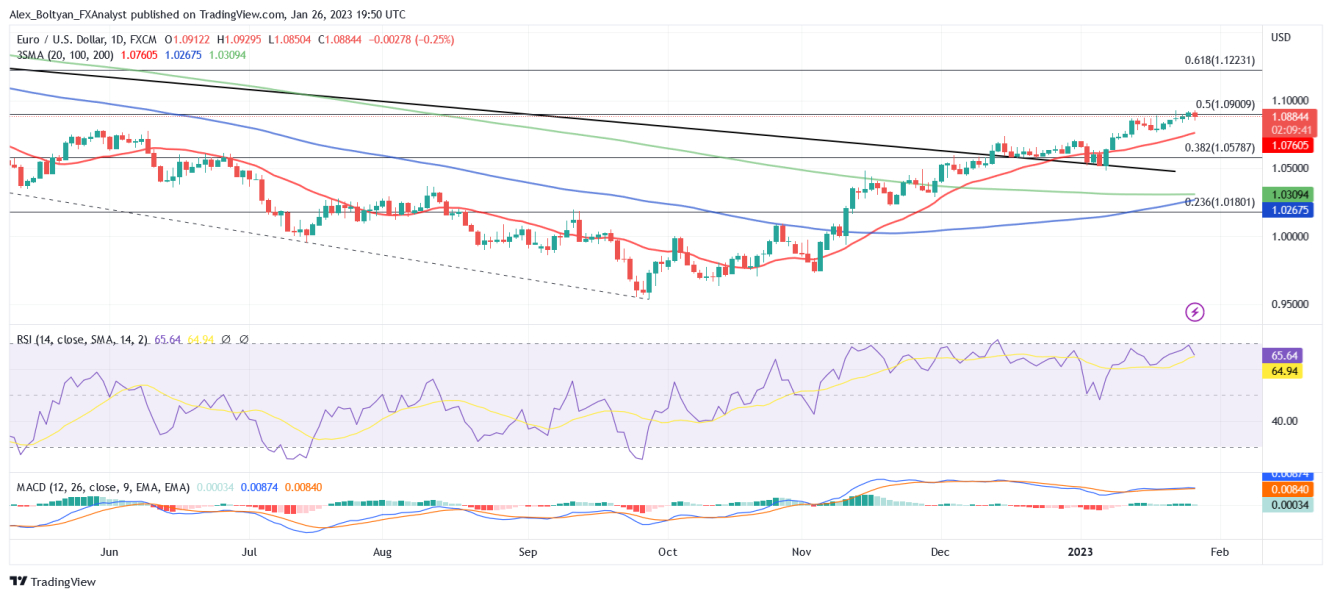The EUR/USD pair slipped back below the 1.0900 level during American trading hours on Thursday following the release of upbeat US macroeconomic data. While investors continued to assess the economic figures, US yields advanced, and Wall Street indexes fell in the data aftermath, favoring the greenback.
At the time of writing, the EUR/USD pair trades at the 1.0885 area, 0.25% below its opening price. The U.S. Gross Domestic Product (GDP) grew at an annualized rate of 2.9% in the last quarter of 2022, surpassing the market consensus of 2.6% but slowing in comparison with the 3.2% rate of the previous quarter.
The Core Personal Consumption Expenditures price index slowed to 3.9% in the fourth quarter from 4.7% in the third quarter. Separated data showed durable goods orders increased significantly by 5.6% in December due to a large number of new contracts for Boeing (NYSE: BA) passenger airplanes.
On Friday, the US will publish monthly and annual figures of the Core Personal Consumption Expenditure (PCE) Price Index, which may play a significant role in next week's Federal Reserve interest rate decision. Currently, markets continue to price in a higher likelihood of a 25 bps interest rate increase and only near 5% probability of a higher increase of 50 bps.

From a technical standpoint, the EUR/USD maintains a positive outlook in the short term, as shown on the daily chart, despite indicators losing momentum over the last sessions. Meanwhile, the pair continues to trade above its main moving averages and near multi-month highs, with pullbacks seen as corrective.
The EUR/USD pair needs a decisive break above the 1.0925-35 area to open the door to more gains, targeting the 1.1000 psychological level. On the flip side, a loss of the 1.0835 zone would expose 1.0800 and the 20-day SMA at 1.0760.
